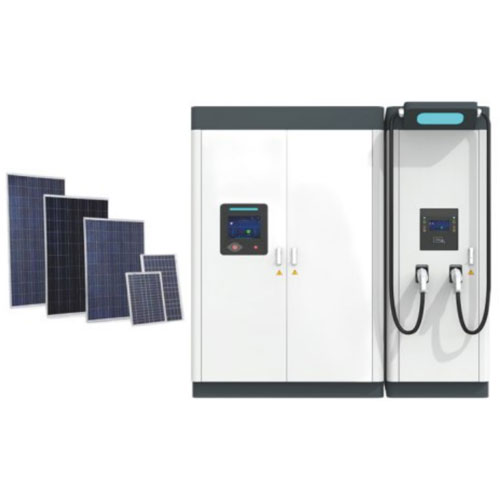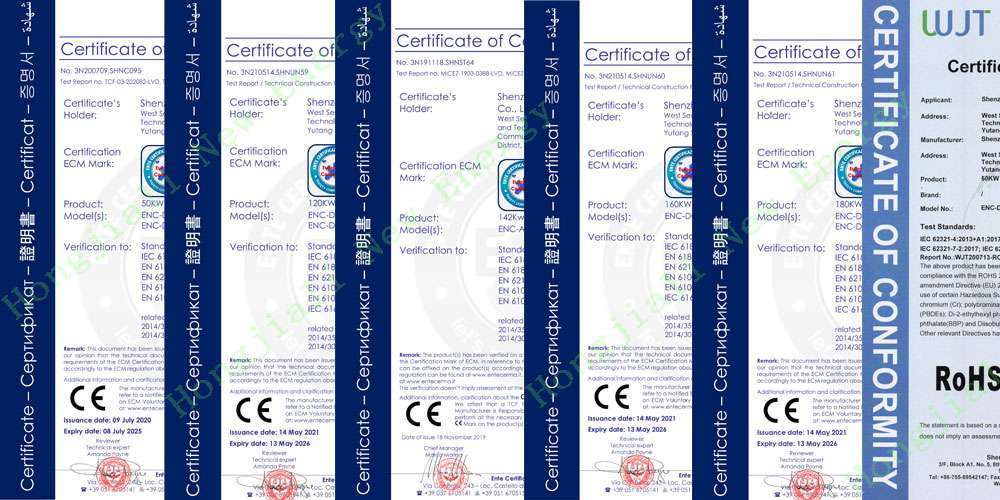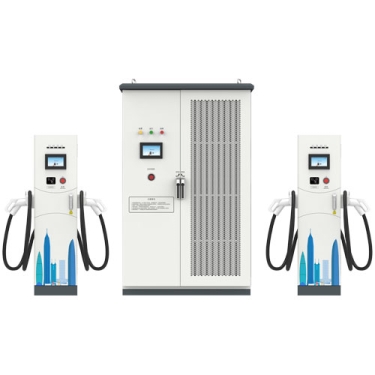Solar ev charging stations, also known as light-storage-charging integrated charging stations, (photovoltaic + charger) use a green charging model that coordinates and supports each other with new energy and smart charging to provide power. In order to better store clean electricity, the integrated photovoltaic, storage and charging charging station project plan innovatively built a zero-carbon energy station that integrates photovoltaic power generation, electric energy storage, vehicle charging and other functions into one.
Hongjiali New Energy Co., Ltd. provides integrated solar photovoltaic storage and charging solutions for charging stations, which not only meets the needs of efficient, stable and safe charging, but also achieves dual benefits of photovoltaic power generation and charging operations.
The integrated light storage and charging solution for solar electric vehicle charging stations is suitable for new energy vehicle charging and swapping stations, various parking lots, industrial parks, etc. It not only improves building utilization, but also effectively solves the intermittent, unstable and unstable nature of new energy power generation. Consumption issues can be solved by making electric vehicle charging more environmentally friendly, and grid-connecting surplus electricity can also increase economic benefits. It can be said that it kills multiple birds with one stone.
Solar ev charging station product parameters:
Product model | CGS200K-100 | CGS100K-050 |
Energy storage parameter | ||
Rated power | 100kW | 50kW |
Nominal capacity | 200kWh | 100kWh |
Charge and discharge ratio | ≤0.5C | ≤0.5C |
Battery voltage range | 500~900V | |
Discharge depth | ≤95%DOD(suggestion) | |
Number of cycles | >5000 times | |
Cell type | 3.2V/173Ah, 3.2V/280Ah | |
Rated voltage | AC380/400V | |
Rated frequency | 50Hz | |
Operating temperature | -20~55℃ | |
Relative humidity | 5%~95%RH,Non-condensing cream | |
Altitude | 2000m | |
Noise | ≤60dB | |
Installation mode | Outdoor cabinet | |
Heat dissipation mode | Air conditioning, water cooling | |
Protection class | IP54 | |
Isolation mode | Non-isolation | |
Charging facility parameter | ||
Rated power | 120kW | 40kW |
Installation mode | Floor type | |
Input voltage | AC380V±15% | |
Output frequency | 45-65Hz | |
Output voltage range | 200-750Vdc | |
Output current range | 0-250A | 0-132A |
Operating temperature | -25~55℃ | |
Relative humidity | 5%~95%RH,Non-condensing cream | |
Altitude | 2000m | |
Noise | ≤60dB | |
Heat dissipation mode | Air cooling | |
Operating interface | 7 "touch screen | |
Charging mode | Automatic charging, fixed power, fixed amount, fixed time | |
Method of payment | Pay by card or by code | |
Networking mode | Ethernet, 3G, 4G | |
Photovoltaic parameter | ||
Rated power | 100kW | 50kW |
Input voltage range | DC300V-1000V | DC300V-1000V |
Input current range | 0-333A | 0-167A |





